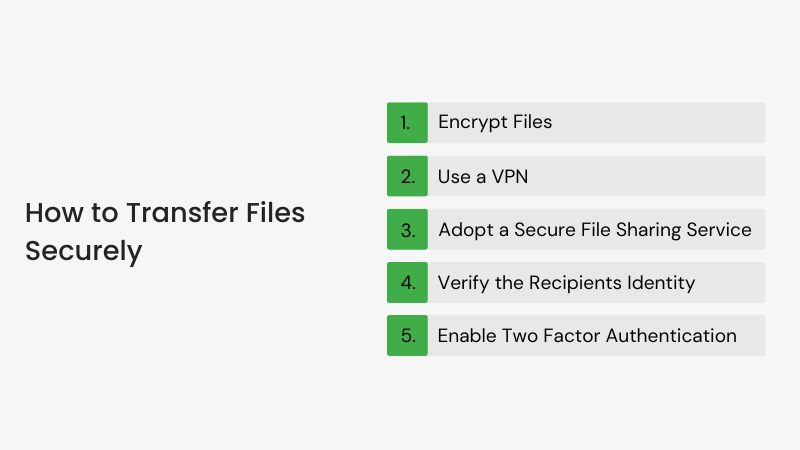This season, email is out! We don’t make the rules. Well actually, we kinda do. Based on our extensive knowledge of security and data privacy, there’s a plethora of information to suggest that transferring files via email is not secure. When it comes to cyberattacks, 94% of malware is delivered via email – if you click a malicious link or provide personal details to your “recipient”, it can result in some very poor consequences.
When it comes to transferring files, security should always be a top concern. With the increasing number of cyberattacks and data breaches, it’s important to ensure that your files are protected before, during, and after the file-sharing process. Luckily, there are some easy-to-implement strategies for transferring files securely. Read on to find out:
How to Transfer Files Securely
1. Encrypt Files
Before you start the transfer process, it’s important to encrypt your files. This can be done using tools such as AES encryption, which is a widely used and secure encryption algorithm. Encrypting your files ensures that even if the data is intercepted, it will be unreadable to anyone who doesn’t have the key to unlock the encryption
2. Use a VPN
If you’re transferring files over a public Wi-Fi network, it’s important to use a Virtual Private Network (VPN). VPNs encrypt your internet connection and protect your data from being intercepted by hackers.
3. Adopt a Secure File-Sharing Service
There are a number of secure file-sharing services available that can help you transfer files securely. These services typically use encryption and secure transfer protocols to protect your data, and many also offer features such as password protection and expiration dates to control who has access to your files.
4. Verify the Recipients Identity
Before you start the transfer process, it’s important to verify the identity of the recipient. This can be done by confirming their email address, phone number, or other contact information. This helps to ensure that you’re sending your files to the right person and not to a hacker who has compromised their account.
5. Enable Two-Factor Authentication
If possible, use two-factor authentication when accessing your file-sharing service. This adds an extra layer of security to your account and makes it more difficult for a hacker to gain access.
Conclusion
In conclusion, there are several steps you can take to transfer files securely. By using encryption, secure transfer protocols, and other security measures, you can help protect your data from being intercepted or compromised during the transfer process. Remember to always verify the recipient’s identity, use two-factor authentication when possible, and keep your software up to date to ensure the best possible security for your files.

